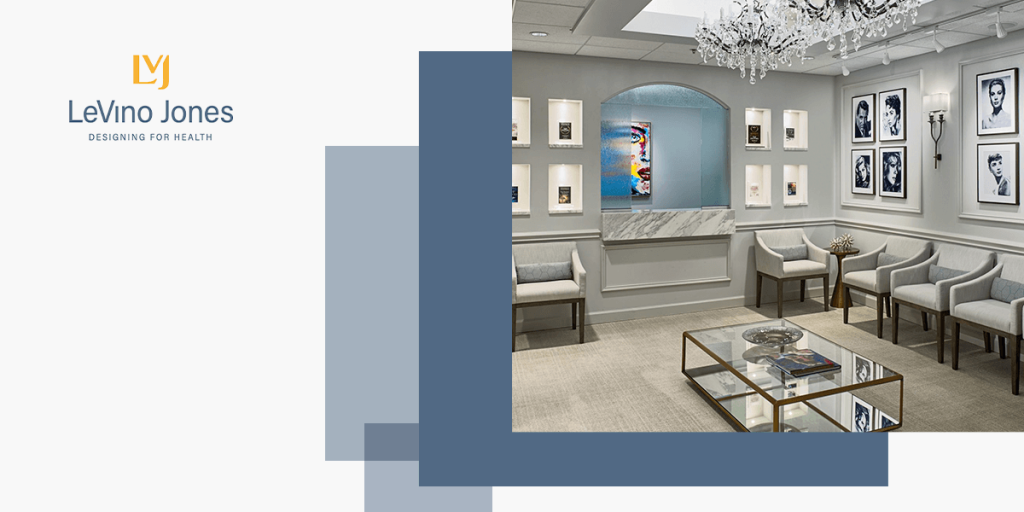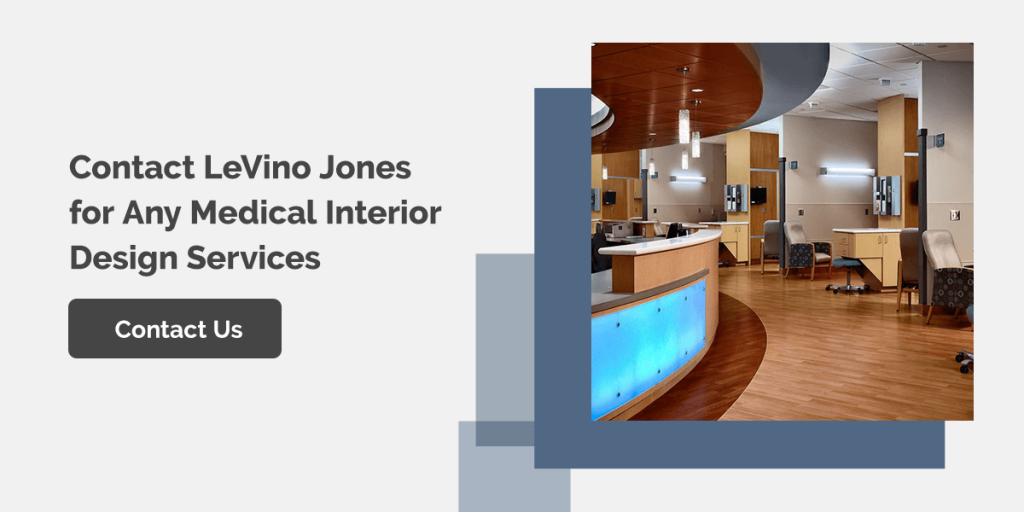
Interior design can benefit your business in more ways than you realize. Commercial interior design enables you to create an atmosphere for employees and clients. You can enhance your customer experience, staff efficiency and the safety of everyone in your business with expert interior design. Interior designers can work with you to help your office or facility vision come to life while prioritizing your customers’ needs and comfort.
Every industry is unique, focusing on different disciplines, objectives, customers, products and services. Commercial interior design must cater to businesses’ specific needs and goals with tailored strategies that speak to each unique customer base. For example, medical practices and restaurants serve different purposes, and thus require specialized designs.
Some commercial interiors, like hospital exam and operating rooms, must prioritize the safety and well-being of patients and staff, so designers will advise on specifications like the location of intensive care units, efficient space for emergency services, room size for patients and medical equipment and where to place doors and barriers to secure staff and patient areas.
Though residential and commercial interior design share similar goals, various characteristics set them apart. Following is a summary of each design type.
Residential interior designers create spaces tailored to homeowners’ lifestyles, needs and objectives. They can recommend functional furniture placement, entertainment features and finishing touches like flooring, lighting, window frames, upholstery and décor to create the desired atmosphere.
Commercial interior designers must consider the business’ objectives and employees’ and customers’ needs, preferences and comfort. Since commercial interior design projects tend to be more complex, they may require a team of designers.
A commercial interior designer can advise a medical facility on the ideal placement of consultation rooms, reception areas and furnishings like art and greenery to make their office more appealing or pleasant for staff and patients. They will also implement safety measures like security doors and accessibility entrances for wheelchair users.
Commercial industries like medical and educational facilities require unique interior design elements based on business needs, purpose, staff and clients. Some buildings, like schools, must prioritize features to enhance students’ comfort and performance in class, while retail storefront building designs emphasize ideal product placement. Here are some types of commercial interior design and what sets each apart.

Traditional commercial or office interior design creates spaces for employees and employers. An office space interior designer understands how to make a workspace ergonomic for employees. They can use their expertise to advise business owners on workspace size, types of office furniture and where to place emergency exits in case of a fire. Office space interior design must emphasize making shared spaces healthy, functional and productive for employees.
Business owners and interior designers can decide on office furnishings and features like wall colors, and how to enhance natural and artificial lighting to create a work environment that enhances employees’ comfort and efficiency. Interior designers can also create versatile office layouts, like adding dividers to fit more desks or selecting modular, easy-to-use furniture.
Retail interior design focuses on design elements that make a store’s products more appealing to its customers. Interior designers work with shop owners to create spaces that enhance their products and customer experience. A storefront must entice customers to walk in, with features such as high ceilings, tall walls and wide entrances to help products stand out.
Interior designers can partner with retail store owners to maximize floor space by strategically placing aisles, shelves and racks to make it easier for customers to browse products. Interior designers can also advise proprietors on wall colors and furnishings to create an atmosphere that reflects the store’s brand and personality.
Food and beverage interior design emphasizes elements that enhance diners’ experience and create a desirable atmosphere. Interior designers and restaurant owners will decide on space, seating, tables, lighting and walkways that enhance diners’ comfort, mood and dining experience. Interior designers will recommend where to place HVAC vents, doorways and emergency exits to improve airflow and safety. They can select furnishings and aesthetics like wall color and decorations like greenery and art to reflect the establishment’s brand and create an atmosphere that aligns with the restaurant’s cuisine and theme.
Food and beverage design also emphasizes kitchen and bathroom placement. Interior designers can ensure restaurant entrances and spaces are accessible for people of all abilities, like adding a ramp at the door and making walkways wide enough to cater to wheelchair users. A restaurant owner may want their kitchen and bar placement to be efficient for waitstaff and visible to patrons. They may also work with interior designers on making restrooms easily accessible without adversely affecting customers’ dining experience.
Educational interior design makes school buildings, classrooms and lecture halls comfortable and accessible for learners of all ages. Interior designers advise school administrators on using furniture like chairs and desks to make learning environments more spacious.
An educational interior designer can find new ways to maximize school space by creating multipurpose rooms, like dividing a gym for various sporting activities such as basketball and track. Teachers also work with interior designers to make their classrooms more functional by adding elements that are conducive to learning, such as integrating technology, natural lighting and ventilation.
Interior design for medical facilities prioritizes design elements that ensure the well-being of patients, doctors and nurses in a health care facility. Medical interior designers specialize in facilities like hospitals, dental labs and medical offices. A design team works with medical offices to help them develop a layout that maximizes space for consultation rooms and reception areas. They can also ensure office design complies with building codes and regulations, respecting the need for accessibility and integration of diagnostic and testing equipment.
Interior designers streamline office spaces, enabling staff and patients to get around quickly for overall efficiency and in case of emergencies. They can also select furnishings and aesthetics that reflect a medical facility’s brand and purpose and enhance the patient and client experience.
Interior designers can advise medical offices on reception and consultation room furniture, color schemes, artwork and fun designs that make patients of all ages feel at ease. Interior designers create plans that place patient rooms, staff areas and medical dispensaries in logical, safe and secure locations.
Your interior design should reflect your facility’s purpose and enhance your employee and client experience. With over 30 years of experience designing health care spaces like dental and medical offices, LeVino Jones understands the importance of creating an ideal atmosphere for your patients and staff.
We specialize in medical facility interior design. Let us help you design your medical interior that enhances your client experience, meets your business objectives and complies with various medical building codes and regulations.
Contact us today for expert medical interior design, space planning or construction oversight needs.
